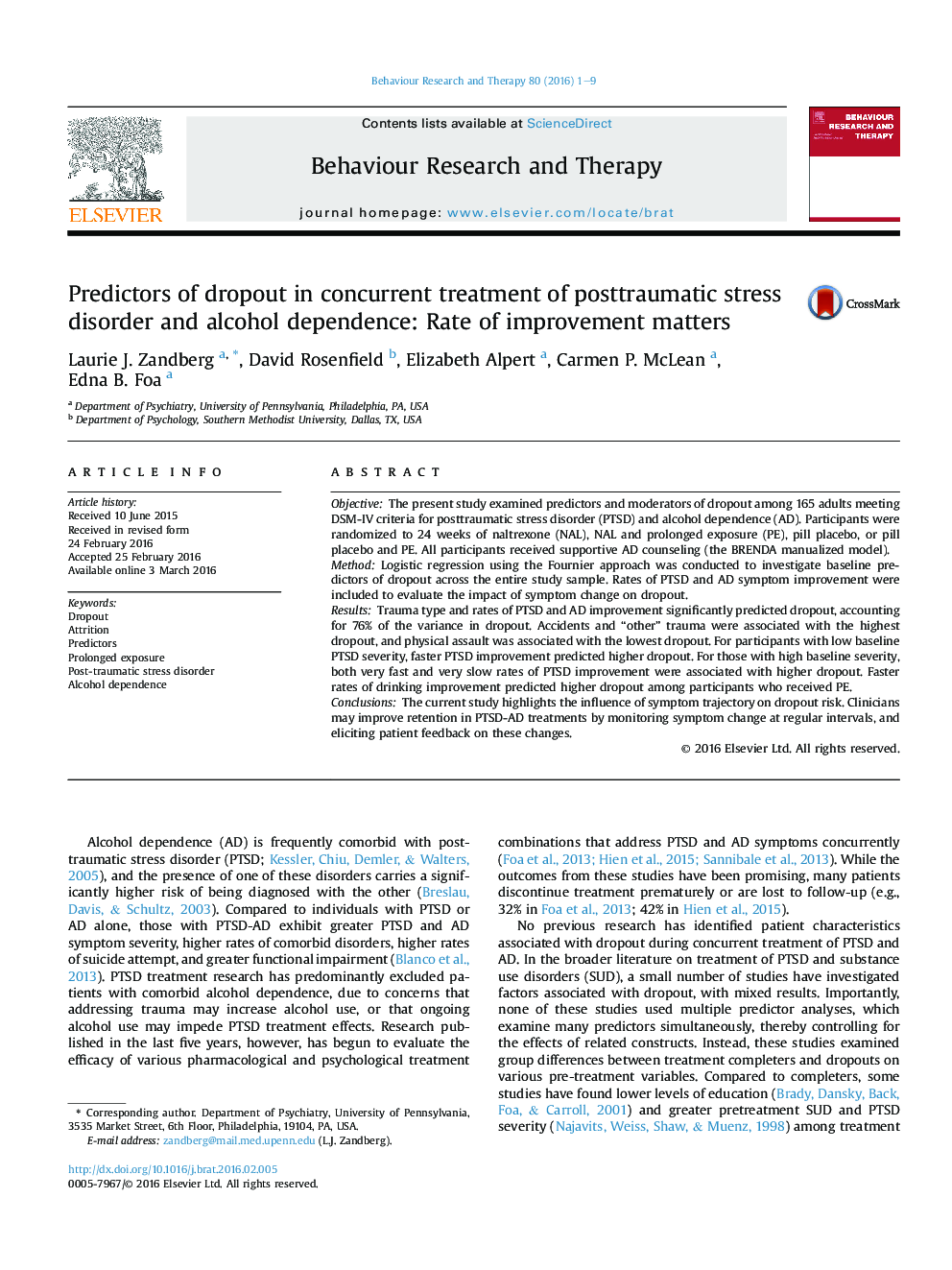| کد مقاله | کد نشریه | سال انتشار | مقاله انگلیسی | نسخه تمام متن |
|---|---|---|---|---|
| 901770 | 1472769 | 2016 | 9 صفحه PDF | دانلود رایگان |
• We examine predictors of dropout among patients with PTSD and alcohol dependence.
• Trauma type and rates of improvement accounted for 76% of the variance in dropout.
• Faster PTSD improvement predicted higher dropout when initial severity was low.
• Both slow and fast PTSD change predicted dropout when initial severity was high.
• In prolonged exposure groups, faster reductions in drinking predicted higher dropout.
ObjectiveThe present study examined predictors and moderators of dropout among 165 adults meeting DSM-IV criteria for posttraumatic stress disorder (PTSD) and alcohol dependence (AD). Participants were randomized to 24 weeks of naltrexone (NAL), NAL and prolonged exposure (PE), pill placebo, or pill placebo and PE. All participants received supportive AD counseling (the BRENDA manualized model).MethodLogistic regression using the Fournier approach was conducted to investigate baseline predictors of dropout across the entire study sample. Rates of PTSD and AD symptom improvement were included to evaluate the impact of symptom change on dropout.ResultsTrauma type and rates of PTSD and AD improvement significantly predicted dropout, accounting for 76% of the variance in dropout. Accidents and “other” trauma were associated with the highest dropout, and physical assault was associated with the lowest dropout. For participants with low baseline PTSD severity, faster PTSD improvement predicted higher dropout. For those with high baseline severity, both very fast and very slow rates of PTSD improvement were associated with higher dropout. Faster rates of drinking improvement predicted higher dropout among participants who received PE.ConclusionsThe current study highlights the influence of symptom trajectory on dropout risk. Clinicians may improve retention in PTSD-AD treatments by monitoring symptom change at regular intervals, and eliciting patient feedback on these changes.
Journal: Behaviour Research and Therapy - Volume 80, May 2016, Pages 1–9
